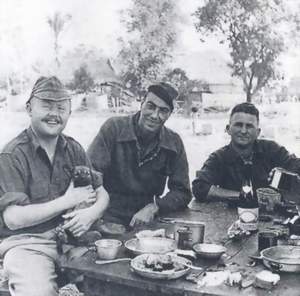|
As
with other equipment, rations to the legion troops and other French components were a horrid mix of manufacturing dates, makers
and designs. Even though a combined board existed that sat out to standardize rations, a normal ration was never established.
Generally
rations were broken down into the following categories:
a. Fresh rations provided in garrison or in mass feed locations.
These were generally fresh rations procured from local sources (which had a substantial portion of the food production geared
toward the French appetite already throughout the colonial period).
| One of the Staple Foods Pain de Guerre |
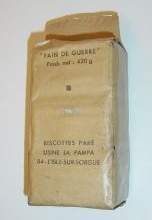
|
| These Hard Biscuits came in various Sizes |
b.
Field group rations provided at company level and lower in locations where group feeding and mess facilities were not
available or practical. These rations much resembled the US 5-in1 and the British Compo ration in their design, comprised
of multiple serving tinned items like meat, fruit, vegetables, beverage base (coffee and tea) and hard bread (Pain de Guerre).
Between 1946-1947, virtually every unit in outposts could rely on getting at least every other meal out of existing stocks
of the British Ration, Composite Pacific (6 Man), which appeared to be somewhat a morale dampener, as much of the fare in
this ration was repetitious and very clearly geared toward British tastes.
| Complete CEFEO (24 hour) ration pack (Top) |
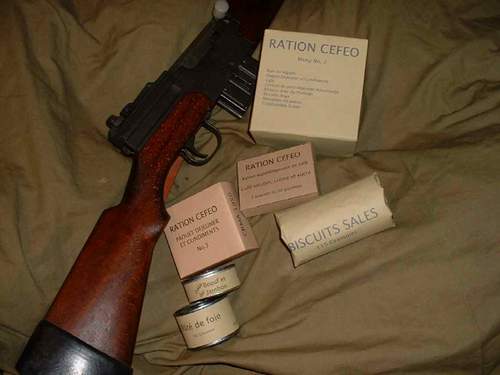
|
| Other Components, including Biscuits and Meat Tins |
c. Individual
rations were issued to troops on the move or those who could not logically be supplied with appropriate multiple unit rations.
This type of ration came the closest to standardization, if only in name. This was the Ration CEFEO, which came in a variety
of menus. Initial ones were nothing more than American K-rations with French wrappers. Soon, these boxed rations (rated as
a 24-hour ration for one man) were beginning to arrive packed in a standard dimension box bearing a standard label and nomenclature.
| 1950 Version of |
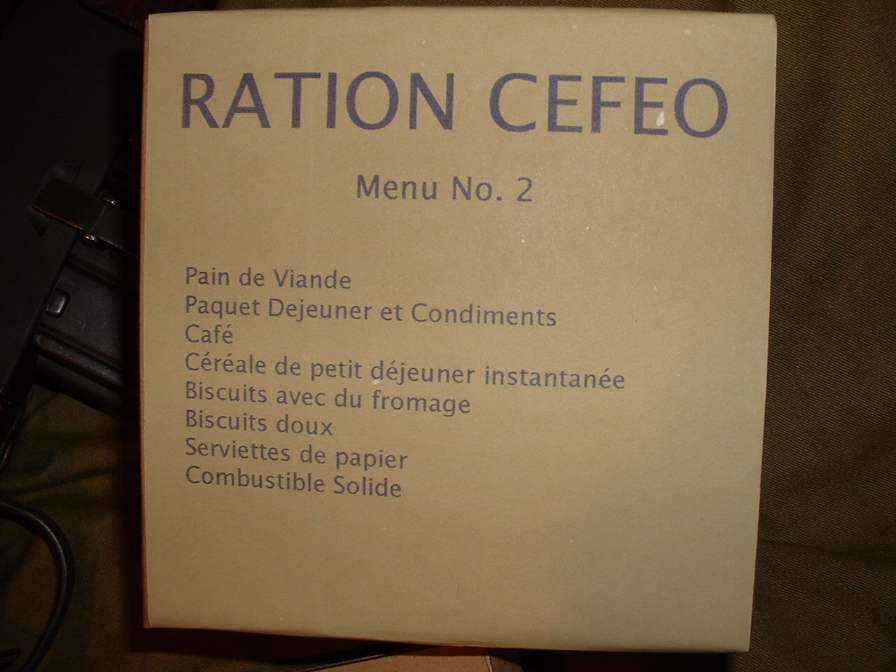
|
| Ration CEFEO (Outer Box) |
This,
however, is where the standardization of the rations ended. During the early part of the conflict, the CEFEO ration consisted
of mostly American and British ration components (generally re-labeled or over-labeled in French), supplemented by French-made
canned goods.
Interestingly
enough, the CEFEO ration was assembled, packaged and labeled under the supervision of CRMA, the Centre de Réception du Matériel
Américain (US Equipment Reception Center). This even continued on when some French
components started replacing the aging US ration items in the early 50s (after all, at the tail-end of this conflict, a full
78% of French war supplies came from the US).
One odd tidbit is the fact that some of the various
snack items, such as chocolates and crackers were produced under contract in both Germany and Japan for the French by the
late stages of the war in Indochina!
d. Specialist rations were issued to parachutists, long-range patrols and aviators,
and were either designed to deliver a short-term nutritional tour de force to the individual, or serve as a life-sustaining
emergency ration. Initially, there were few choices of specialist rations, with the ration either being comprised of over-stamped/over-labeled
US D rations, meat tins from US K or British 24-Hour rations, British Horlick's Tablets or Emergency rations (in many cases
a sticky mess, as the chocolate component was not high-temperature tropical chocolate), or a variety of French produced tinned
and packaged energy foods ranging from liver paste to dry cookies.
Even
some Canadian World War 2 rations reached the lineup, including biscuit sandwiches filled with cheese or peanut butter. Later
in the war, French made "snack" components dominated the field, and emergency survival rations life the flat-tinned Ration
de Secours became standard issue to aviators or specialist troops. The fact that one of the first purpose-built French made
ration series of Emergency survival rations was the 'FOM Type N.102' (Forces
d'Outre-Mer - Overseas Forces version 102!) is somewhat of an indicator how many different versions
of emergency rations existed! But even the issuance of these newly designed special purpose emergency/survival rations
prevented the Legionnaire in 1954 at Dien-Bien Phu receiving the occasional issue of 1944 and 1945 made US D-Ration Bars,
or German Luftwaffe wrapped energy bars!
e. Other rations included existing stock rations of Japanese, captured German
and even pre-war French tinned goods of questionable quality and nutritional value. Examples can be seen in the (as late as
1952) issue of German tinned bread, and similarly late issues of Japanese crackers and tinned fruit. Several Japanese companies
secured contracts with the French government to produce rations, such as tinned candy, but in many cases these were merely
re-packaged WW2 hard candy drops that had been re-labeled.
In
summation, no one could express it better than one of the Legionnaires interviewed:
"It
is good that we had the Viet Minh and other Bandits to distract us with war, or we would surely have gotten the idea to deal
with the rations board and the cooks for some of their offenses".
Click Here to Return to the Indochina Page!
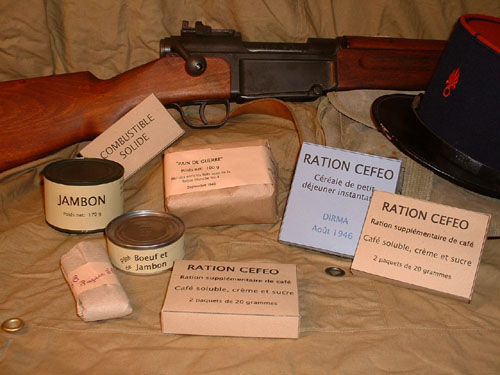
|
| Plus de singe |
|
